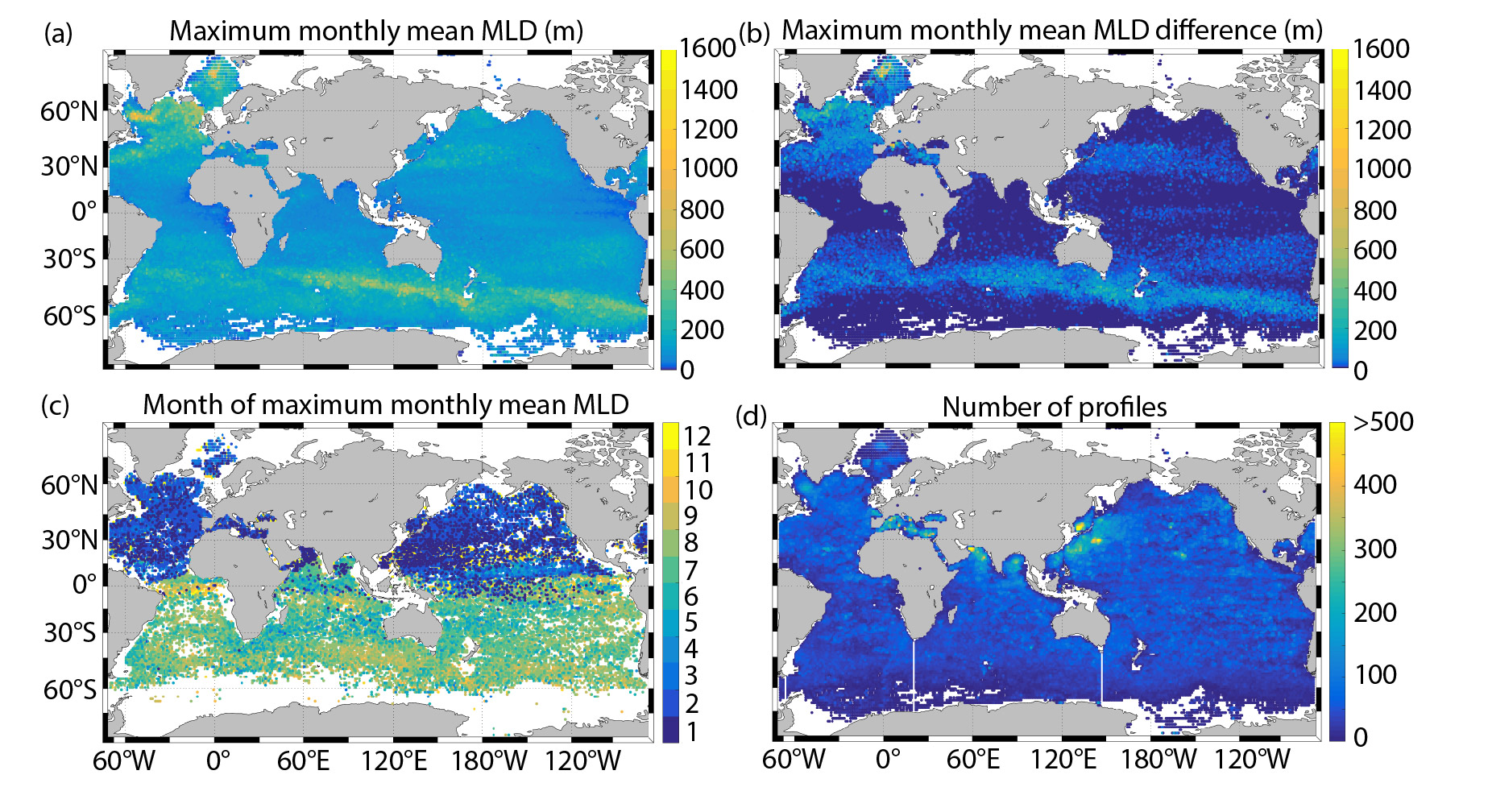___Argo Mixed Layers


Introduction: |
|
We have compiled a mixed layer climatology and database (described in Holte et al. 2017) using Argo
profiles and a hybrid method (Holte and Talley 2009) for finding the mixed layer depth (MLD). The
climatology incorporates nearly 2,620,000 Argo profiles (April 2022). The new hybrid algorithm models the general shape of each profile, searches for physical features in the profile, and
calculates threshold and gradient MLDs to assemble a suite of possible MLD values. It then analyzes the patterns in the suite to select a final MLD estimate. Results are also presented for MLDs
calculated using de Boyer Montégut et al.'s (2004) threshold values.
Two forms of Argo MLDs are provided (updated April 2022):
|
 |
|---|
| Data: |
| The output includes nearly 2,450,000 delayed-mode and real-time Argo profiles, collected between January 2000 and March 2021. The profiles were screened with some simple quality controls. | Mixed layer depths and properties for all Argo profiles: |
|
The following fields are calculated for each individual Argo profile:
|
| Monthly mixed layer climatology: |
|
The climatology is determined by grouping the profiles into 1 degree bins and then calculating the mean, median, maximum, and standard deviation of the MLDs for each month, as well as the monthly mean mixed layer temperatures, salinities, and potential densities. These variables are calculated separately using the density algorithm and the density threshold. The maximum MLD is calculated as the mean of the three deepest MLDs. The monthly mean MLDs calculated by the temperature algorithm and the temperature threshold are also included. The climatology contains the following monthly fields averaged into 1 degree bins:
|
| Old versions of the database |
|
|
| Acknowledgements: |
|
If you use this data, please cite it as:
Holte, J., L. D. Talley, J. Gilson, and D. Roemmich (2017), An Argo mixed layer climatology and database, Geophys. Res. Lett., 44, 5618–5626, doi:10.1002/2017GL073426. The Argo data used to create this climatology were collected and made freely available by the International Argo Program and the national programs that contribute to it. (http://www.argo.ucsd.edu, http://argo.jcommops.org). The Argo Program is part of the Global Ocean Observing System. doi.org/10.17882/42182#56126 |
| Links: |
|
|
Funding from the National Science Foundation (OCE-0327544 to L. Talley and T. Chereskin), and U.S. Argo through NOAA (Grant NA17RJ1231 to SIO-JIMO, D. Roemmich) © 2020 Scripps Institution of Oceanography, UC San Diego. All Rights Reserved.